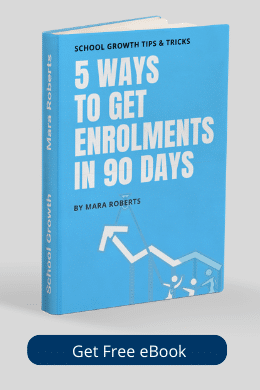Your school website is more than just a digital brochure — it’s a key part of your enrolment strategy, a vital communications tool, and often the first impression families have of your school. And yet, many school websites are underperforming. They’re outdated, difficult to navigate, or failing to answer the questions prospective parents are actually asking.
The best school websites don’t just look good — they work hard. They’re strategically built, easy to use, and continuously improved using real insights. As school marketing professionals and professional school website developers, we’ll break down what makes the top performing school websites stand out and how your school can take steps to get there.
The Best School Websites Are Informed by Data
No effective website strategy starts with guesswork. It starts with analytics.
Using tools like Google Analytics, school marketing teams can track exactly how users interact with their site. From what pages they visit, to how long they stay, to where they drop off. This kind of data shows you:
-
Which pages matter most to your audience
-
Where prospective families are losing interest
-
What content needs improvement or simplification
The best school websites regularly review this data and use it to guide their next updates.
They Prioritise Key User Journeys
Parents and students visit your website with specific goals in mind — booking a school tour, enquiring about fees, checking term dates, or accessing parent portals. If those paths aren’t clear and intuitive, you’ll lose them.
Here’s what the best performing school websites do well:
-
Clear calls-to-action for enrolment, open days or enquiries
-
Streamlined navigation with fewer clicks to key pages
-
Mobile-first design that works seamlessly on all devices
-
Fast load times and clean layouts to reduce friction
In short, user experience (UX) is a non-negotiable.
Content Is Regularly Reviewed and Updated
Outdated information is one of the quickest ways to lose trust. The best school websites operate with a content maintenance plan. Meaning someone is responsible for reviewing, updating and publishing content on a consistent basis.
This includes:
-
Refreshing program descriptions and staff listings
-
Updating enrolment procedures and school calendars
-
Adding new content like blog posts, student achievements, or community news
Fresh content doesn’t just keep families informed, it also improves your site’s SEO and ranking potential.
They Use A/B Testing to Drive Results
Want to improve enquiry conversions? Don’t guess test.
A/B split testing is a method where two versions of a webpage (A and B) are shown to different users, and performance is measured. Even small changes — like the headline on a homepage, the placement of a button, or the copy on an enquiry form — can produce measurable results.
The best school websites use testing to improve:
-
Enrolment enquiry forms
-
Open day sign-up pages
-
Donation and giving platforms
-
Call-to-action buttons and headlines
This approach means improvements are based on evidence, not assumptions.
They’re Treated as Ongoing Projects, Not One-Off Builds
Many schools launch a new website… and then forget about it. But the best school websites evolve constantly. They’re managed like living platforms — with regular updates, audits, and optimisations scheduled into the marketing workflow.
Think of your website as your school’s most valuable real estate online. You wouldn’t ignore your front gate for five years, so don’t ignore your homepage either.
You don’t need to overhaul everything at once. Start by understanding how your current website is performing, then create a prioritised roadmap for improvement. Small, consistent changes based on real user data will outperform a flashy redesign with no follow-up, every time.
The best school websites are those that put the user first, adapt quickly, and stay aligned with the school’s strategic goals.



